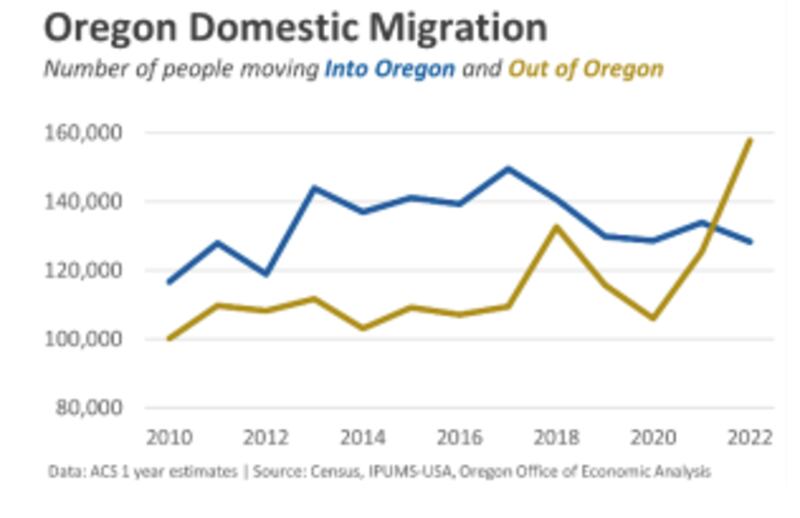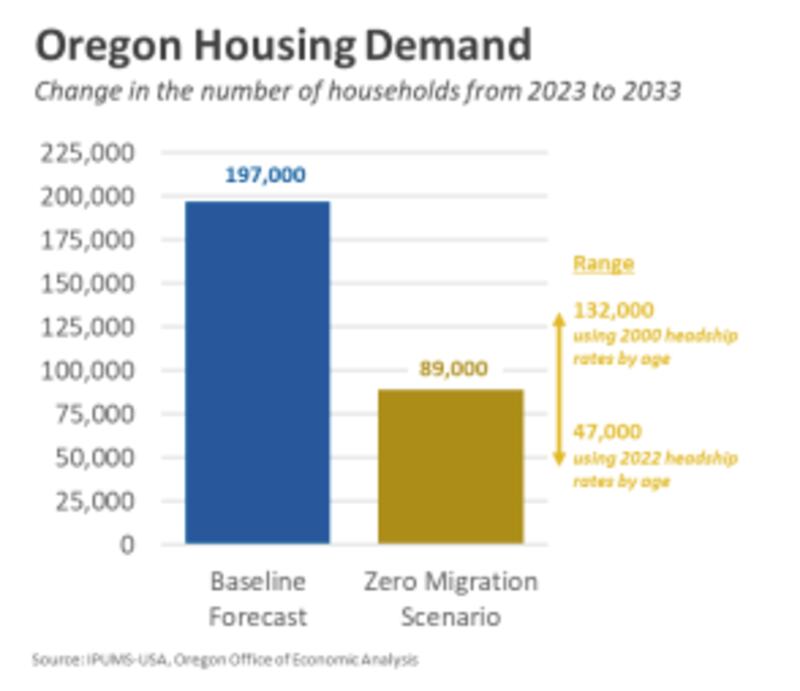Was the dip in Oregon’s population in 2022 just a blip?
State economists are pretty sure it was. Their baseline forecast is for the population to increase 7.3% between now and 2033. That’s still nothing like the go-go years of the 1990s and the 2000s, when Oregon was a people magnet and Portlandia drew hipsters by the hundreds.
“The baseline outlook for Oregon is that population growth will see a modest rebound in the years ahead,” state economists write in their December revenue forecast. “Oregon is still an attractive, scenic place to live, and there are plentiful job opportunities.”
But the decline in 2022 has economists looking at a worse-case scenario. For years, Oregon’s economy benefited from new arrivals, their money, and their productivity. Since World War II, Oregon’s population has increased every year but four. Three of the down years were in the 1980s, when the timber industry went bust, and there were no huge semiconductor plants to take up the slack.
The fourth one was in the year ended July 1, 2022, when COVID-19 killed hundreds, and hundreds more left the state for reasons that policymakers are still debating. Among the suspects are high taxes, poor services, inflated housing prices, and the newfound ability for even state employees to work from other states. In fiscal 2022, Oregon lost 16,000 people, the U.S. Census Bureau said in December.

“There are some structural changes afoot,” economists write. “The ability to work from home to a greater degree means states and metros with high cost of living and terrible housing affordability will likely see slower gains or larger losses as some households can now work further afield. This is in addition to any other considerations impacting household choices be they taxes, politics, social issues, or the like.”
Slumping population tends to terrify economists, especially in states that have had the luxury of growth for so long. Fewer in-migrants, especially younger ones, mean fewer families and fewer home purchases. Demand for everything suffers in the end: groceries, lattes, artisanal doughnuts, you name it.

“Population growth is the main reason Oregon’s economy outperforms the typical state over the entire business cycle,” the Oregon economists write. “Oregon must be open to the possibility that even a modest rebound in migration may not materialize in the years ahead. It is possible that the pandemic is a structural break point.”
Fewer arrivals mean fewer workers, too, state economists warn. That’s grim news in a state where there are shortages of waiters, plumbers, nurses and doctors. Providence hospitals in Portland are postponing all but emergency surgeries right now because they can’t hire enough anesthesiologists.
If zero migration takes hold, Oregon’s labor force would be 1.4% smaller than it is now, down about 30,000. It sounds small, state economists write. But the decline from baseline growth is 196,000.
“Such trends would continue to put significant pressure on local businesses looking to hire or expand,” state economists write.

